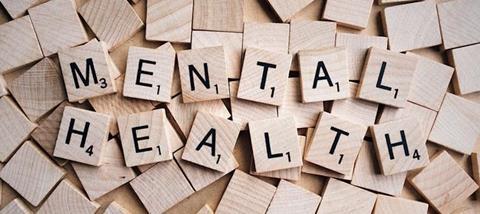
Over half of mental ill health starts by age 14. One in ten young people – that’s around 300,000 teenagers – currently have an anxiety disorder.
Indeed, anxiety is the single most common reason for young people being referred to Child and Adolescent Mental Health Services (CAMHS). Researchers for The Prince’s Trust 2017 Youth Index found that 45 per cent of young people feel anxious over their body image, while 37 per cent worry about coping at work or school. The report also found that three quarters of young people think there is stigma attached to mental ill health, meaning a quarter of young people would not confide in someone if they thought they were experiencing a mental health problem.
We know that school learning, stress tolerance, confidence, motivation and personal relationships are all adversely affected by unmanaged high anxiety. And yet, across England, six in ten children and young people do not receive treatment for problems such as anxiety and depression. Meanwhile, 56 per cent of school leaders say it’s difficult to find mental health services for pupils.
In short, it is likely that we all know or work with children and young people with elevated levels of anxiety. And the chances are, they are not talking to anyone about their struggles and not getting the support they need. With increasing pressure on statutory services, many young people are only able to access support when their anxiety has become high enough to severely affect their everyday lives.
That often leaves youth workers on the front line of supporting young people with mental ill health, be it in local schools, youth groups or church gatherings. We know we have a gospel mandate to care for children and young people, ushering in God’s kingdom in all aspects of life, yet mental health issues, in particular, can often be a daunting prospect. How can we help our children and young people?
More than just cave people
Many approaches to supporting young people with high anxiety point to our cave-dwelling ancestors who relied on the heightened vigilance brought on by worry about dangers such as sabre-toothed tigers. Fears for their own safety resulted in the fight, flight or freeze response – the readying of the body to run away, stand and fight, or feign death when faced with such a danger.
Modern science further explains how, when perceiving danger, our bodies release the hormone adrenaline, which increases heart rate and breathing, releasing the energy needed for a rapid response. But these changes inadvertently produce the rather unpleasant sensations associated with anxiety such as heart palpitations, butterflies in the tummy, nausea, sweaty skin and emotional turbulence.
While these responses are wholly appropriate for situations in which we face real and present danger, our bodies often over-react to situations that do not, in reality, pose a physical threat to our safety. Our cave-dwelling ancestors’ legacy, it would appear, is somewhat out-dated in a world where danger appears in the form of social media dislikes.
Understanding that these unpleasant physical sensations are a normal, and ultimately harmless, throwback to our ancestors’ primitive response to perceived danger often goes a long way in reassuring young people who struggle with anxiety problems today.
CBT for youth workers
This rational approach to explaining the link between our thoughts, feelings and behaviours is the foundation of cognitive behavioural therapy (CBT), the most commonly used treatment for anxiety disorders. CBT explains how our thoughts (or beliefs) about our self and the world around us shape our responses to stress triggers in terms of our physical symptoms, our emotional responses and the actions we take (behaviours).
Imagine a young person faced with a looming test. Depending on their beliefs and previous experiences, they might see this as a threat to their safety – albeit their educational or reputational safety – triggering a fight, flight or freeze response. This, in turn, causes them to feel nauseous and shaky – the effects of adrenaline on their body. They feel nervous, scared or vulnerable. Their response, like many of us, is to avoid the perceived danger so they pull a ‘sickie’ from school that day. But this, in turn, reinforces their existing – but possibly erroneous – beliefs and anxieties about them self and the world around them.
CBT helps young people understand the link between thoughts, feelings and behaviours, as well as providing a range of helpful tools that better enable them to cope with the stresses of life. While such therapy is ordinarily delivered by qualified practitioners, these tools and approaches are relatively easy for youth workers, teachers and others to learn and share with young people.
ReMind me
Resources such as ReMind, a programme that utilises cognitive behavioural approaches to help youth leaders better support young people with anxiety disorders, can make a very real difference. ReMind is helping reduce young people’s elevated anxiety by around a third over a period of five to ten weeks as it provides a range of tools that specifically help them identify and challenge errors in their thinking, face their fears and practice relaxation techniques.
The tools in ReMind can be used by youth workers with small groups or one-to-one, and with a wide range of ages. Click here to discover how you can use these tools in your own setting.
For more advice on mental health, along with many other issues facing children and young people, why not subscribe to Premier Youth and Children’s Work


































